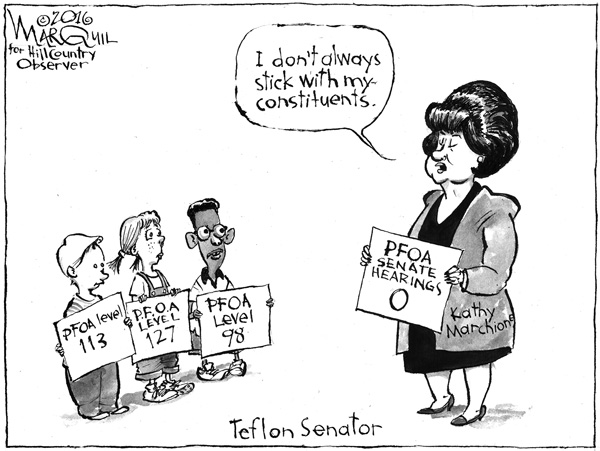Editorial July 2016
E D I T O R I A L
Albany’s culture on display in Hoosick Falls water case
After so many years, Albany’s distinction as America’s most corrupt and dysfunctional state capital has become so familiar that it’s no longer clear whether each new outrage makes much of an impression on the average New Yorker.
Consider that the two men who were the state’s most powerful legislators at the beginning of last year wound up being sentenced this spring to lengthy federal prison terms after being convicted in separate corruption trials. In the past 15 years, more than three dozen other lawmakers have faced legal or ethical charges or resigned while under investigation.
By now, voters’ expectations are so low that no one really figures New York state government will accomplish much beyond perpetuating itself. And when things occasionally do get accomplished, it’s invariably the result of closed-door wrangling and behind-the-scenes manipulating -- not because of any public legislative process, because New York essentially has no such thing.
Barely an hour from the Capitol, though, the human cost of a dysfunctional state government is on full display in Hoosick Falls, where more than 4,000 people have been exposed to a probable carcinogen because contamination from a local factory seeped into the well system that supplies drinking water to the village.
The contamination with perfluorooctanoic acid, or PFOA, was discovered in the summer of 2014 by a private citizen who commissioned his own tests of the village’s water after becoming alarmed by cancer deaths in the community. But even after he and others made the test results public, village officials and the state Department of Health continued to insist for more than a year that the Hoosick Falls water was safe.
That fiction ended in November, when the U.S. Environmental Protection Agency stepped in and said forcefully that the water was not safe -- for drinking, cooking or even running a humidifier.
So everyone in Hoosick Falls drank bottled water for a few months until a temporary filtration system could be installed and tested. Now the state says the water really is safe for drinking, though some residents are understandably skeptical.
In the meantime, a separate batch of PFOA contamination was found near another factory in Petersburgh, and more contaminated sites were discovered across the Vermont border in North Bennington and Pownal.
By early June, as our cover story this month details, blood tests showed hundreds of people in northeastern Rensselaer County carrying high concentrations of PFOA in their bodies.
People are angry and scared and want answers. But one step local activists have been seeking for months – a legislative inquiry into New York’s initial bungling of the PFOA crisis and why it told people the water was safe when it wasn’t – seems mysteriously out of the question.
The Democratic leaders of the Assembly environment and health committees both said earlier in the year that they would plan such hearings, but both backed away from the idea in April after negotiation of the state budget was complete. And state Sen. Kathleen Marchione, R-Halfmoon, whose district includes Hoosick Falls, still claims she might support hearings at some future time, but for several months she’s given a shifting series of explanations for why now is not the right time.
Why not just be honest? Albany doesn’t do accountability. We don’t do sunshine. Keep the lights off, please.
It’d be funny if it weren’t sickening.


